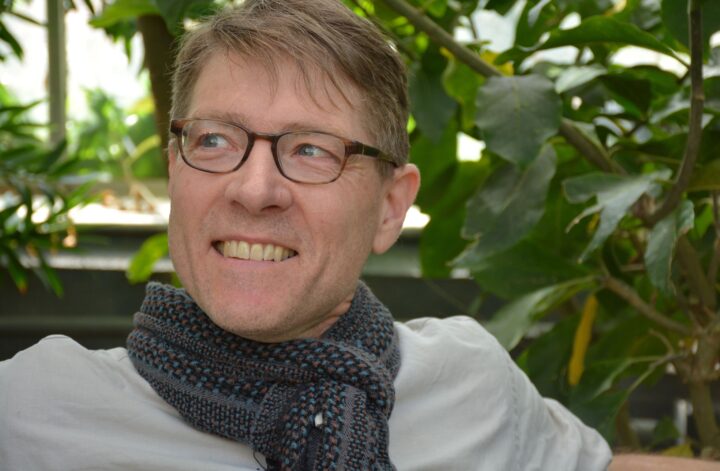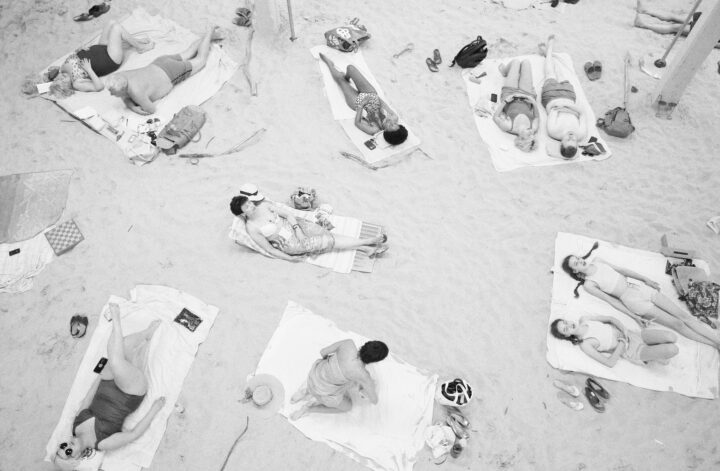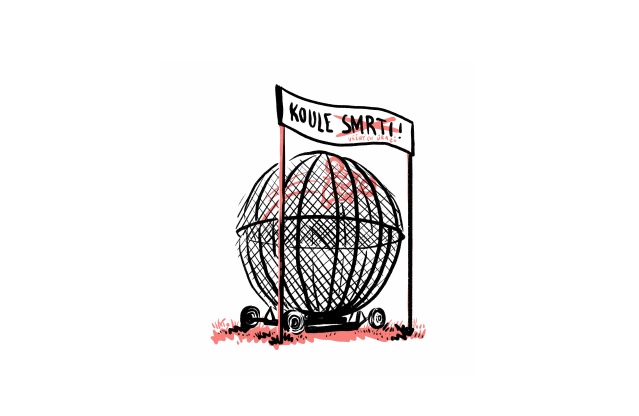”There are three nationalities in the Southern Bohemia, that is Germans, Czechs, and Budweisers.” This is how the German inhabitants of Šumava Mountains spoke about the residents of Budějovice even at the beginning of the 20th century. But who were these Budweisers? What would characterize them? In this exclusive interview for Milk&Honey, Jeremy King, an American historian who wrote a book on Budweisers, answers these and other questions concerning the Czech-German relationships in the 19th and 20th century.
I assume you have been to Budweis before, probably multiple times. Was your historical research the sole reason for your visit or do you have other ties to this place? Were you interested in the town itself and its inhabitants or just in its history?
I first visited Budejovice in the autumn of 1986, together with a teenager from Prague who suggested that we explore Southern Bohemia for a few days. We slept on a very cold park bench at Hluboká, then made our way to Budejovice before continuing, I think, to Krumlov. It was a Švejkian anabasis, minus the rum perhaps. During the Cold War, not a hot one. Several years later, when I was in the History Ph.D. program at Columbia University, I decided to return. That was because I was looking for a town where Czech-German unfolded person-to-person, in daily life. (Another place that I considered was Jihlava.) The project also included a Slovene-German town in Southern Styria, Maribor / Marburg an der Drau, and a Hungarian-German town in Western Hungary, Sopron / Ödenburg. But once I started writing, I realized that national conflict in a single town over the course of a century was quite a lot to explore in a book. So I dropped the other two case studies.
I have no Czech, German, or Austrian ancestry, and no personal ties to the Bohemian Lands. But I did enjoy my time in Budejovice in the early 1990s, as a revolution played out after the collapse of the Soviet system in 1989. Especially welcoming and helpful to me were Jan Mareš, Director of the State Library, and Robert Sak, who was teaching at the newly established university in town. Eventually, I hope, I’ll revisit Budejovice and see how more than thirty years of liberal or neoliberal governance have changed the place. In recent years, though, my research trips have been to Vienna, Prague, Brno, and various smaller towns in Moravia—in connection with a newer research project about efforts in imperial Austria to make formal, legal decisions about who was German, who was Czech, how Jews might have fit into those categories, and so forth.
In your book Budweisers into Czechs and Germans you discuss several different identities of the town’s inhabitants between 1848 and 1945. People at that time could consider themselves Czechs, Germans or Budweisers. The first two terms are clear, but what does the third one mean? Nowadays, it would be understood probably only by those interested in the history of the town.
“Budweisers,” according to people in town in the second half of the 19th century, counted as a third nation or nationality, different from Germans and Czechs. But that somewhat joking maxim or saying was inaccurate, because Budweisers were NOT national. Rather, they resisted nationalizing trends, and understood themselves and other people to be defined much more significantly by nonnational categories. They cared about religion, for example, and occupation, and traditional, ‘stavovské’ distinctions. Perhaps they cared less about nationality than about social class. Or maybe they just cared about family and friends, and had little interest in what ‘national leaders’ and nationalized, nationalizing newspapers and institutions of public life considered important.
Another way to approach your question is to challenge whether the terms “Czech” and “German” really are clear to people today. My book about Budejovice tracks dramatic and repeated changes in the meanings of those two words between the 1840s and the 1940s. Their socio-economic content, their location on political spectra, their implications regarding language use and political allegiances, their relationship to each other, all this and more changed as the national movements grew, state boundaries and regimes changed, and two world wars raged. Humans distinguish themselves from other animals by conceptualizing a past before they were born and a future after they die. But often, we project (or impose) our present on the past and on the future. Czechness today is radically different from Czechness 150 years ago. Nationality, nationhood, nationalism, or however we might name a certain set of political legitimacies is a fluid, continually evolving, fundamentally historical phenomenon. Budejovice’s history between the 1840s and 1940s allows us to see the development of two nationhoods (Czech and German) fairly well, because competition between national movements for the same individuals made the change more visible, and a highly literate, self-documenting society and a nationally ambiguous state (imperial Austria) censored national actors less and less.
What were the relationships between these identities and how did they influence the life in the town? Were these just a matter of political representation or did they have a cultural or everyday dimension? Did they coexist or rather compete?
In the 1840s and ‘50s, Czechness and Germanness were fairly ‘thin’. Many people had little interest in them, especially if they were poor. But the national movements worked hard to make themselves relevant to more and more people—especially people who could vote. Meanwhile, the development of universal literacy by means of compulsory primary education raised a question: if a child was going to learn to read and write in Budejovice, then in which language or languages would that be? By the 1890s, not only elections, school enrolments, and the question in the census about the ‘language of daily use’ [obcovací řeč] counted as nationally significant. August Zátka and other Czech leaders in town tried to persuade (or coerce) Czech-speakers of all classes to buy their groceries in Czech stores, to read Czech newspapers, to drink Czech beer, and so on. Svůj k svému! ‘Budweiser’ national indifference, bilingualism, Czech-German intermarriage, and self-interest continued, but at various points—during the Nazi occupation, for example—national demands on loyalty became very intense and “thick” indeed.
Nowadays, the only political figure of that era generally remembered is the Czech representative August Zátka. His statue, placed in the town hall courtyard, is a symbol of Czechs taking control over the German town hall after 1918. Is there anyone else worthy of our attention? Why is only Zátka part of our collective memory, and only faintly at that?
About 20 years ago, I wrote an article about another prominent person in Budejovice who now lives on in a public place as a statue: Vojtěch / Adalbert Lanna. He contributed to German and Czech organizations before he died in 1866, and is a good example of a Budweiser. After he was safely dead and silent, Germans and Czechs tried hard to claim him for their competing causes. In interwar Czechoslovakia, some statues of Germans were removed from public places in town, but Lanna remained, as a Czech. Then the Nazis reclaimed him as a German. After 1948, though, the Soviets and their local allies seem to have rejected him as a bourgeois. There were statues of Lenin or Marx; and in Marx’s case, it certainly wasn’t because of his German origin. After 1989, both Marx and Lenin lost favor, while Lanna made a comeback. He is one tough cookie!
Lanna seems to have been a civic-minded person with considerable organizational talent. The same can be said about Zatka, and also about Bishop Jirsík. For that matter, maybe about the long-time German mayor Taschek—although I found it hard to learn much about him as a three-dimensional being. Maybe Lanna, Zátka, Jirsík, and Taschek were all horrible people in their private lives. Certainly Jan Mareš and other citizens of Budejovice have done amazing work in recent decades to document talented, humane, or heroic local people–male and female, German and Czech, Christian and Jewish. Modern times in Budejovice have been tragically turbulent: the town experienced violent upheaval in 1848, 1914-18, 1938-48, 1968, and 1989. Almost every German was expelled, and almost every Jew (as defined by the Nazis) was murdered or driven into exile. The roles that individuals played differed, and were not entirely of their own choosing. I tried in my study of Budejovice to sum up that big picture. For biographies, I would need more time and different talents.
Nowadays, it is yet again very fashionable to swear by national identity in the context of Central Europe. It has been happening even though we know to what ends this idea can lead. Could the so-called local loyalty be a more positive competition to these social processes?
Instead of rendering judgments of “positive” and “negative,” I tried to understand how human difference and conflict produced outcomes in Budejovice that almost no one wanted or expected. And understanding the past was hard! If I struggle to understand the past, how can I hope to predict the future?
Nationalism can be called a form of political legitimacy, and as such a lever for getting people to do things. Those things can span the spectrum from enlightened to depraved. Right now, we are witnesses to a sort of supranational, post-Soviet ‘identity’ which has inspired many Czechs to help Ukrainian refugees and to provide material and moral support to Ukrainian soldiers who are fighting to preserve their country’s independence. Local loyalties no doubt have roles to play as well. All I’ll offer as a guess is that today’s big political challenges require collective, global responses—and local dimensions to those responses will make a difference.
There are several copies of your book in the town library, and they seem to be read judging by the torn pages full of coffee stains and underlined sentences. Is it important for a historian to be read? And who should read them?
Thank you for news about the use and abuse of my book in its spiritual home. I would have liked to see Budweisers into Czechs and Germans published in Czech, and worked with a talented translator, Petr Justin, to have the introduction published in Jihočeský sborník historický in 2002. But other projects got in the way, and my meatily detailed narrative of how Czechs became today’s heirs to Budweisers continues to be available only in English. Occasionally, I get emails from readers, some in Budejovice. Once, I got an excited letter from a lawyer in Italy who had just won a lawsuit against the American brewer of Budweiser beer—with assistance from my book. Such moments are rewarding. But writing readable history is difficult. Kateřina Tučková’s Vyhnání Gerty Schnirch and Alena Mornštejnová’s Listopád are much more compelling than anything I’ve written. So is Elena Ferrante’s „Neapolitan“ series centered on two women in southern Italy between the 1940s and about 2010, and Siegfried Lenz’s Heimatmuseum. I’d be happy if some day, a first-class novelist were to use my Budweisers book to push their fiction closer to how things maybe „really were“ in a particular time and place. Simon Mawer is a Briton who lives in Italy, but his Skleněný pokoj, about the Tugendhat villa and family in interwar Brno, seems successful at capturing something genuine. He seems to read history….
Text: Veronika Faktorová, Kateřina Kovářová




1 komentář